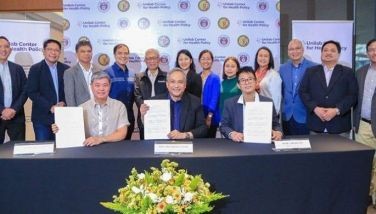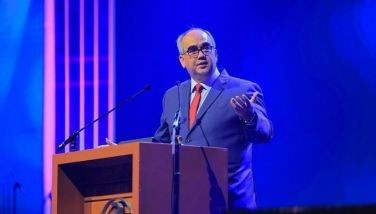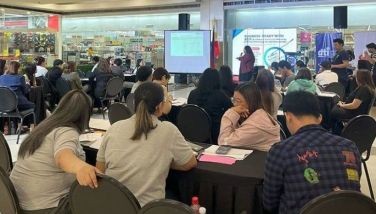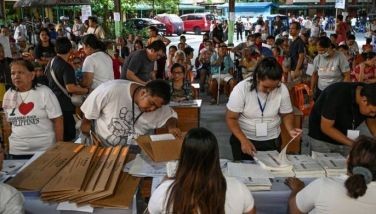Catholic

Is there a Catholic vote?
Until Fidel Ramos, a Protestant, was elected president in 1992, everyone assumed that the large Catholic majority ensures an effective religious screen for high public office. Still, the idea that a large majority of voters were Catholics stymied efforts to pass legislation that ran against the core doctrines of the Church: abortion, divorce, contraception and same-sex marriage.
On issues that did not touch on core doctrinal concerns, however, an adverse Catholic vote was hardly a deterrent. In the fifties, for instance, nationalist legislators passed a law requiring the teaching of the life and works of Jose Rizal in all schools. There was hardly a Catholic backlash even if the most orthodox viewed the hero as some sort of infidel because of his association with the movement of free thinkers during his time and his unflattering portrayal of abusive clergymen.
We do have religious sects that practice bloc-voting. We do have movements within the Catholic fold, such as the El Shaddai, that implicitly endorses candidates. But the traditional hierarchy has studiously avoided overt intervention in partisan politics, preferring moral guidance to actual candidate endorsement.
The closest the Catholic hierarchy came to shaping political outcomes was in 1986, in the breathtaking events that led to what is called the “Edsa Revolution.” But even during those heady days, church leaders were careful to couch their involvement in terms of clarifying moral choices. Clergymen and lay leaders participated in guarding the ballots, explaining their involvement in terms of protecting the people’s choice.
The way the Catholic Church is organized itself militates against playing an overt political role. Every bishop is an independent prince accountable directly to the Vatican. This inhibits its ability to take an overt partisan role.
A few years ago, reacting to the gains made by pro-choice advocates, some parishes put up tarpaulins basically demonizing candidates supportive of population control measures. It is not clear if this had any impact in the electoral outcomes. But the strong insistence on core doctrinal positions by some clergymen obviously dissuaded the more radical advocates of legalizing abortion.
Because of the anti-Duterte noises made by some bishops, the self-styled “opposition” candidates in the senatorial race are hoping a “Catholic vote” would materialize this time and rescue them from falling off the margins. They have made it standard procedure to call on the bishops during their provincial sorties.
We have no measure of the endorsement power of individual bishops. It does not seem likely, however, that whatever endorsement power they have would suffice to overhaul the deficit between them and those indicated to be in the winning circle.
Besides, it appears to be too late in the day to alter the trends.
Arbiters
At the local level, where the number of votes is small, some semblance of a “Catholic vote” could matter.
One grizzled veteran of many elections credits former president Fidel Ramos with brilliantly neutralizing the mobilization of a “Catholic vote.” The former president convinced the clergy to participate in electoral oversight through the Parish Pastoral Council for Responsible Voting (PPCRV). Designated independent arbiters in the electoral process, clergymen and lay leaders are now inhibited from making partisan endorsements.
Notwithstanding, the clergymen and lay leaders composing the PPCRV could still exert influence depending on who the candidates were and what was at stake for voters in the locality.
In this electoral campaign period, the PPCRV has been involved in organizing debates between rival candidates as part of the effort to enlighten voters. Those debates could matter in defining the outcomes.
Consider the debate organized by the PPCRV in Manila’s 5th congressional district between incumbent Rep. Cristal Bagatsing and challenger Ali Atienza.
Bagatsing, in her maiden term, seemed interested only in legislating same-sex marriage. She appeared totally uninterested in other items of legislation and has been among absentee legislators.
The thought of appearing before the altar of the St. Anthony’s Church in Singalong in an event hosted by the clergymen and lay leaders of the community must have been uncomfortable for Bagatsing. Her single legislative advocacy, same-sex marriage, did not sit well with the doctrinal core of the arbiters of the debate. The very prospect of being interrogated on her single advocacy before a staunchly Catholic audience must have been intimidating.
Despite having earlier confirmed attendance in the only public debate in that congressional district, Bagatsing did not show up for the debate. That surely offended the hosts of the debate and the voters who bothered to attend an event to make a more considered choice.
Atienza did not just dominate the event where his rival chickened out. His was the only voice heard by concerned (and influential) voters in that district.
Locals say that Bagatsing’s non-appearance in a debate that would have focused on her singular advocacy was a big blow to her campaign for a second term.
If Bagatsing’s legislative concerns were better rounded rather than confined to a single newfangled issue, and if she showed a little more diligence doing her job as representative of that district, the debate organized by the PPCRV would have been less of the discomfort it turned out to be.
This incident illustrates how, despite the absence of a “Catholic vote” on a national scale, the PPCRV could still make doctrinal issues matter.
- Latest
- Trending




























